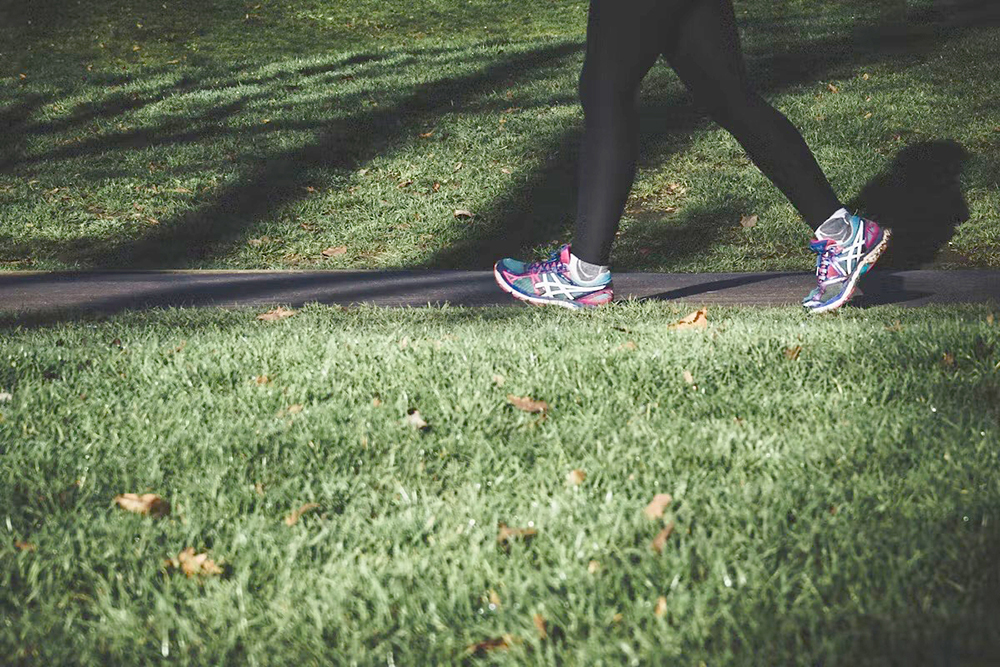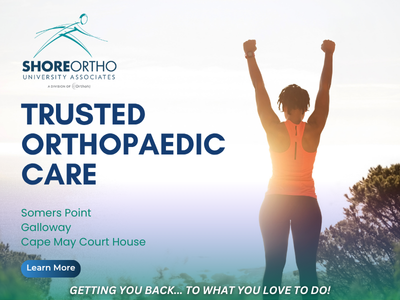By Robin Stoloff
Health & Wellness
Let’s be honest. We all know we should be moving more. We’ve heard about the benefits a million times, yet between work, family and that addictive new Netflix series, it’s easy to let exercise take a backseat.
But here’s the thing: being active isn’t about spending hours in the gym or running marathons. It’s about feeling energized, staying strong and keeping your body and mind in peak condition for years to come.
Fortunately April, also known as Move More Month, is a chance to embrace small, intentional changes that can transform your well-being.
Are we moving enough?
Turns out, most of us aren’t. In fact, only about 1 in 4 adults in the U.S. meets the CDC’s recommended levels for both aerobic and muscle-strengthening activity. That shortfall has serious consequences including higher risks of heart disease, diabetes, depression and cognitive decline.
When you think about health risks, sitting probably doesn’t make the list, but it should. The average American spends 10 or more hours a day sitting at a desk, in the car, or on the couch, and research shows it’s taking a toll. Prolonged sitting has been linked to higher risks of heart disease, diabetes, cancer and even mental health issues like depression and anxiety.
Dr. James Levine of the Mayo Clinic famously called sitting “the new smoking,” and for good reason. Too much time in a chair can lead to tight hips, weak legs and limited mobility, often factors in falls among older adults.
It is not just the body that suffers. A UCLA study found that too much sitting is associated with weakening in areas of the brain crucial for memory, even in people without dementia. The takeaway? Sitting less and moving more, even in small bursts, can protect both your body and your brain.
Even modest efforts can pay off. Adding only 500 to 1,000 extra steps a day can lower your risk of heart disease. And just 11 minutes of moderate movement a day? That’s linked to a 23% lower risk of early death. That’s less time than it takes to scroll through your feed.
Movement is the closest thing we have to the fountain of youth. Think of exercise as an all-in-one prescription for a longer, stronger, happier life. It keeps your heart healthy, your blood pressure in check and your muscles and bones in fighting shape. It also gives your mood a lift with an extra boost of endorphins and helps reduce stress, anxiety and even symptoms of depression.
Physical activity also sharpens focus, boosts memory, improves sleep and helps protect against cognitive decline. It even supports your immune system and builds self-confidence. The bottomline is that movement fuels nearly every part of your well-being. It truly is a superpower.
Variety keeps things interesting and your body well-rounded. Different types of movement matter and combining them makes workouts more fun and prevents burnout. Aim to include a little of each:
Strength training: Keeps muscles strong, bones healthy and metabolism humming. You can use weights, resistance bands, or just your own bodyweight – whatever works for you.
Cardio: Anything that gets your heart rate up counts – walking, biking, swimming, dancing. Just get moving and get your blood flowing.
Flexibility: Stretching and yoga improve range of motion and help prevent injury.
Balance: Balance becomes increasingly important as we age, making exercises like tai chi, single-leg stands and other balance-focused activities essential for maintaining stability and preventing falls.
If you want to sneak in more movement, there is no need to overhaul your entire routine. Small tweaks can lead to big changes. Park farther away. Take the stairs. Stretch between Zoom calls. Do a quick dance break while cooking dinner. Everyday chores count, too, such as gardening, vacuuming, even chasing after your kids or pets.
Moving with others adds a layer of fun and accountability: go for a walk with a friend, join a group class, or try a movement challenge.
Starting is great, but sticking with it is even more vital. Here is a hint. Do activities you actually enjoy. Hate running? Skip it. There are plenty of ways to reach the same goal. Try dancing, hiking, or bicycling. Schedule your fitness activities like any other important appointment to keep you accountable and make them a habit.
Fitness trackers can give you that little extra nudge and help you track your progress. Set realistic goals, even if it’s only 10 minutes a day to start. Celebrate wins, whether that’s hitting a step goal, lifting a little heavier, or simply feeling more energized. If life throws off your routine, forget the guilt. Just start again when you can. Little rewards, like new workout gear or a massage, can also help keep you motivated.
Move More Month is a reminder that you don’t need to overhaul your life to improve it. You just need to start. Walk, stretch, dance – whatever feels good. Every step counts and your future self will thank you for every one of them.
Robin is a former television reporter for NBC News 40. She currently hosts a podcast and radio program called Living Well with Robin Stoloff. It airs Sundays at 10 AM on Lite 96.9. You can email Robin at livingwellwithrobin@gmail.com

















